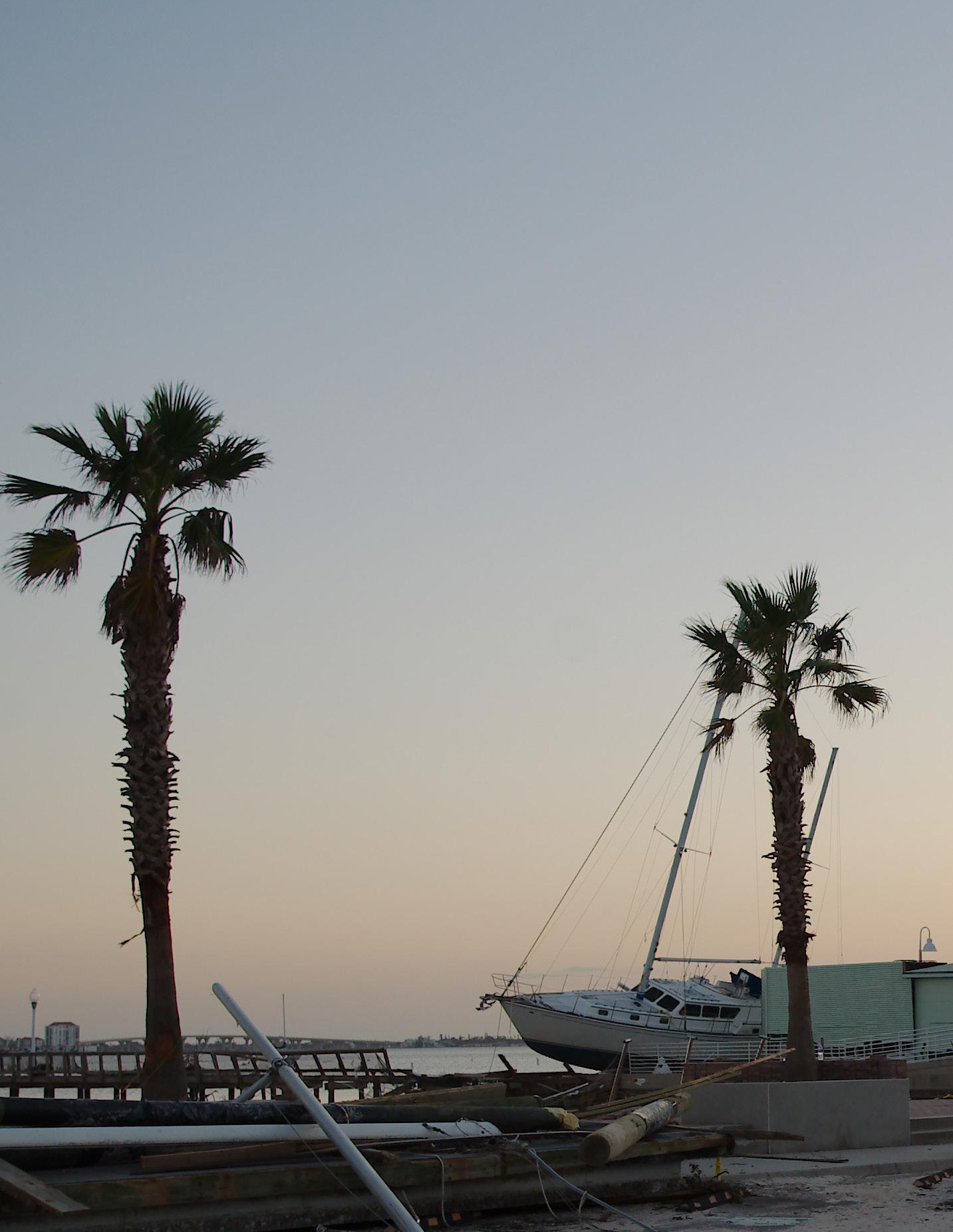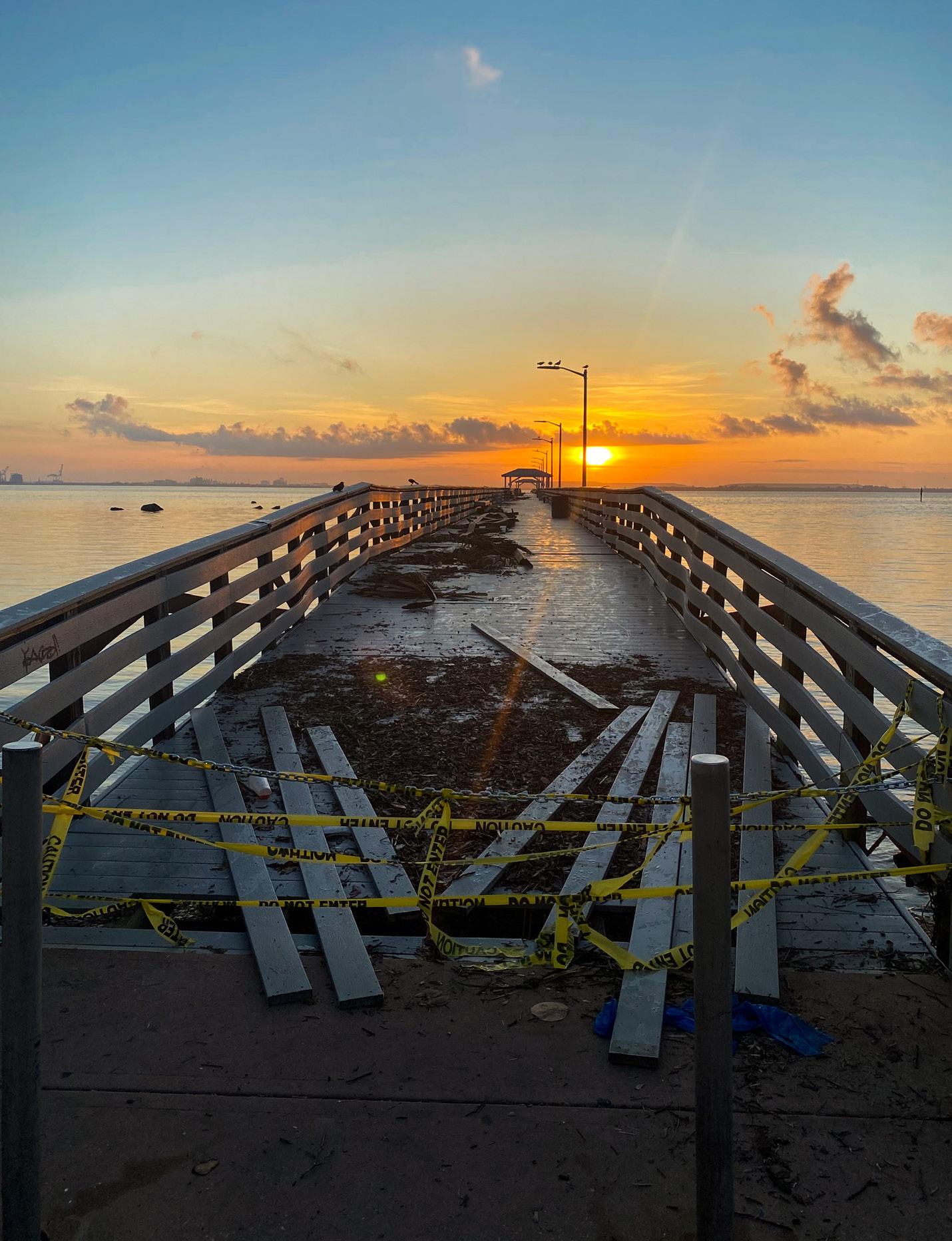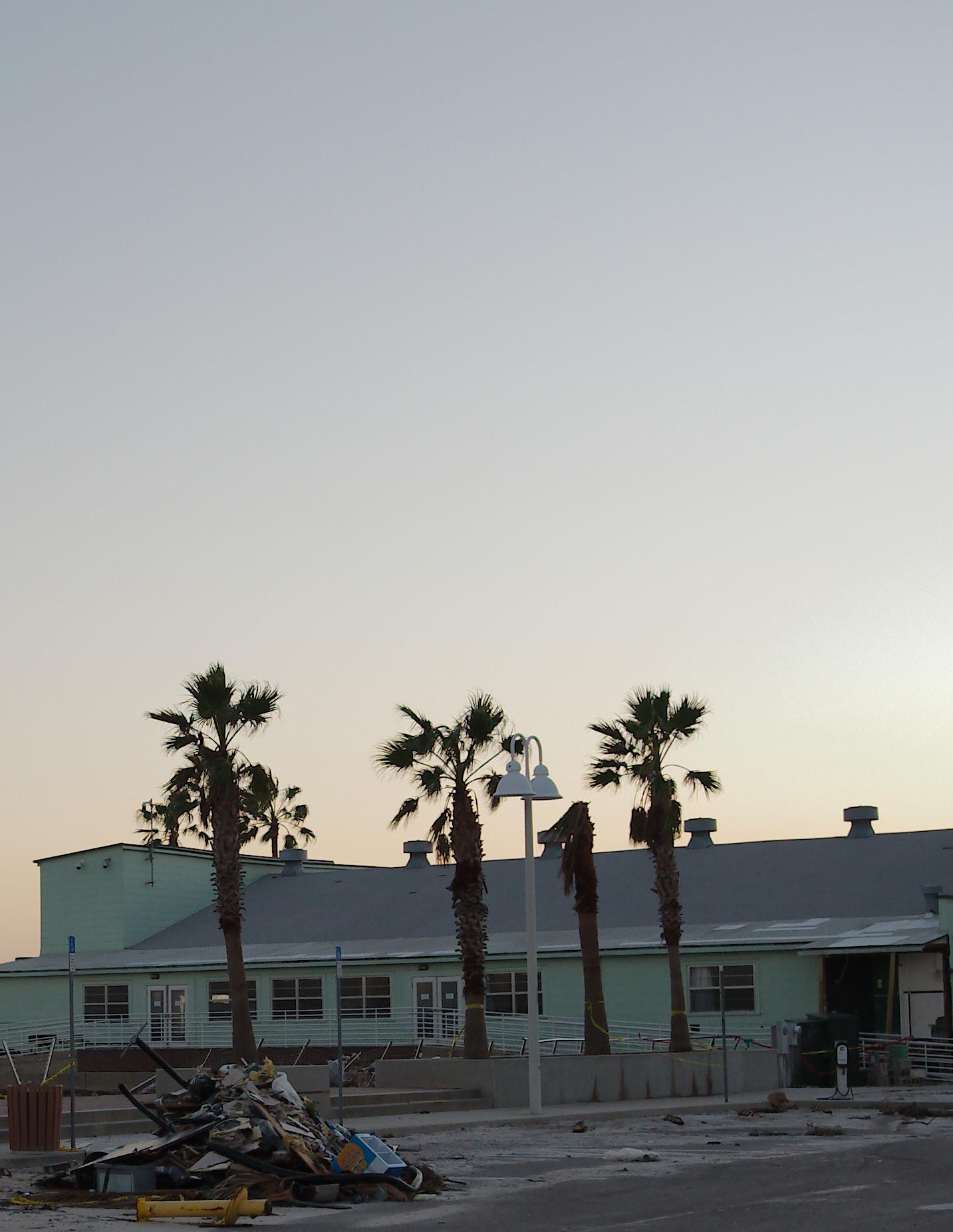
7 minute read
Milton, Helene Unleash Destruction Across Florida
BY THOMAS EHLERS, STAFF WRITER
The proverb might claim the best things come in pairs, but the reality of Hurricanes Helene and Milton making landfall nearly two weeks apart was far from positive.
Helene made landfall near the Big Bend – the area’s second direct hit of the 2024 hurricane season – on Sept. 26 as a Category 4 hurricane with sustained winds of 140 mph. Milton followed closely behind, rapidly intensifying over the Gulf of Mexico into a Category 5 before its eventual Category 3 landfall near Siesta Key on Oct. 9.
Both storms brought different, significant impacts as they took divergent paths through the state. Helene’s swift movement brought hurricane-force winds through the Panhandle — winds that made it as far North as Atlanta — while storm surge in Steinhatchee reached nearly 10 feet. A storm surge between five and 10 feet accompanied Milton, which dropped 12 inches of rain in Tampa and 19 inches in St. Petersburg, while the storm spawned 15 tornadoes across the southern portion of the state.
By Oct. 14, the Federal Emergency Management Agency (FEMA) had approved more than $177.6 million for over 56,900 households in Florida as officials continued damage assessment from both storms. Thirty-five people were killed from Milton’s effects – more than a dozen came from Florida – and at least 20 of the more than 230 fatalities during Helene happened in the state. While Helene and Milton produced lifechanging results, they did underwhelm initial forecasts by officials.
“While the worst case scenario was thankfully avoided with this storm, this storm did still bring destruction and damage in various parts of the state,” said Florida Governor Ron DeSantis at a press conference in St. Petersburg following Milton.
MILTON’S MARK
Perhaps Milton’s most visible effect came to Florida’s power infrastructure. The state had restored 4.12 million accounts by Oct. 16, less than a week after the storm, as prestaged crews across the state expedited the restoration process.
SeaPort Manatee, the primary deepwater seaport in Southwest Florida, receives fuel, fruits and vegetables, appliances, construction materials and wood, and initial damage assessments from Milton suggested losses of $225 million. Ten of 13 on-site warehouses were lost, 3 of 10 port-owned docking facilities were lost, and widespread damage to port offices was reported.
On Oct. 14, DeSantis announced SeaPort Manatee would receive a $9.5 million award in addition to other state assistance – $5.5 million for emergency berth repairs and dredging in state waters and $3.5 million to fund immediate security needs and access control. The remaining award funds will be used to support planning activities for fortifying port infrastructure.
“With the major impact that seaports have on our state’s economy and the quality of life for our residents, it’s critical that we ensure our seaports are open and fully operational, particularly SeaPort Manatee given the significant damage they sustained following Hurricane Milton,” said Florida Department of Transportation (FDOT) Secretary Jared W. Perdue, P.E.
Florida’s governor echoed the need to take initiative.
“This action to get SeaPort Manatee back to full operations will benefit the people of Florida, ensure the hardening of our infrastructure for future disasters, and ensure normal life is resumed for Floridians as soon as possible,” said DeSantis. “Taking action to address these impacts now is imperative to keep Florida on the road to recovery.”
In surrounding waters, six Carnival Cruise Line ships saw itinerary shifts due to the storm and port damages, while more than a dozen other ships on numerous cruise lines announced diversions and impacts to normal operations during the storm.
Similarly, air traffic and airports across the state felt Milton’s mark, as thousands of flights were canceled or delayed due to storms that shut down St. Pete-Clearwater International Airport (PIE), Tampa International Airport (TPA), Orlando International Airport (MCO), Southwest Florida International Airport (RSW), Sarasota Bradenton International Airport (SRQ) and Palm Beach International Airport (PBI) for periods of time.
Additionally, Amtrak halted service between Jacksonville and Miami Oct. 7-11, and Brightline paused operations between West Palm Beach and Orlando Oct. 8-10. CSX tended to a few trail washouts in Central Florida after the storm, but outside of downed trees, few damaging effects were felt.
Engineers played a significant role in rescue efforts across the state, as Florida State Fire Marshal’s Office’s Urban Search and Rescue teams and Florida National Guard rescued nearly 1,800 individuals and 225 animals during and after the storm. These operations paralleled similar efforts by local law enforcement and the Florida Fish and Wildlife Conservation Commission (FWC).
FDOT deployed more than 2,000 team members in response to the storm, assisting in a number of avenues. Cut and toss operations by 486 crew members cleared more than 12,000 miles of roadway, while 150 bridge inspectors reviewed and cleared the more than 2,400 bridges across impacted roadways.

Healing From Helene
Helene damaged the Central Florida Pipeline, the only direct source of jet fuel to Orlando International Airport. The pipeline was shut down due to floodwaters, and TPA, PIE and Tallahassee International Airport (TLH) all saw closures during the storm.
The Panhandle’s power grid felt similar damage from Helene, as Taylor, Dixie, Suwannee and Madison counties all lost power, and several additional counties experienced outages. More than 52,000 residential properties across Florida claimed damage, with insured losses totaling more than $1 billion less than a week after the storm, according to statistics from CBS News.
FDOT crews removed more than 50,000 cubic yards of sand from roadways, including more than 14,000 cubic yards of sand from Tampa’s Gulf Boulevard. The department played a large role in Helene recovery efforts, clearing 1,400 bridges via inspection, assisting the Florida Department of Agriculture and Consumer Services with the repair of a damaged truck sensor at a Suwannee County agricultural inspection station and helping rail and utility companies with the removal of downed power and fiberoptic lines across railways.
Across the state, FDOT utilized 334 personnel and 372 pieces of heavy equipment towards road debris pickup and reviewed more than 9,000 traffic signals.
Areas like St. Petersburg felt effects from both storms. The city’s Northeast Sewer Treatment Plant was shut down in advance of Helene as a precaution for storm surge. More than a million gallons of wastewater were discharged into various bodies of water across the area. Milton caused 30 water line breaks, leading to a boil water advisory, while more than 100 traffic signals were downed during the storm.
Across the Big Bend area, fishing infrastructure sustained damages from the collective hurricane season. On Oct. 23, DeSantis announced $1 million from the Florida Disaster Fund to the Fish and Wildlife Foundation of Florida to rebuild boat slips, docks and important infrastructure, including fish houses and aquaculture businesses.
The state’s saltwater recreational fishing impact tops $9.2 billion annually, while commercial fishing generates $197 million in commercial food fish sales, according to statistics from the FWC.
"The Big Bend's fishing industry took a direct hit from hurricanes Debby and Helene, and so did the hardworking Floridians who make their living on the water," said DeSantis. "Today’s investments will help to rebuild critical waterside infrastructure and help get Floridians in the fishing and aquaculture industries back to full operations.”

As the state pursues a return to normalcy after a busy 2024 hurricane season, state officials acknowledged the everpresent danger the growing number of Floridians face in the fall, but they also presented a number of decisions – like pre-staging linemen, physical resources and state agencies and assets – that led to positive impacts during these natural disasters.
“There’s nothing new under the sun,” said DeSantis in a Oct. 10 press conference in Fort Pierce. “This is something the state has dealt with for its entire history, and it is something we will continue to deal with.
“I think what has changed is we have 23 million people, a storm that hits is likely to hit more people and property than it would have 100 years ago so the potential for that damage has grown. What’s also changed is the prevention, to prestage the assets."











